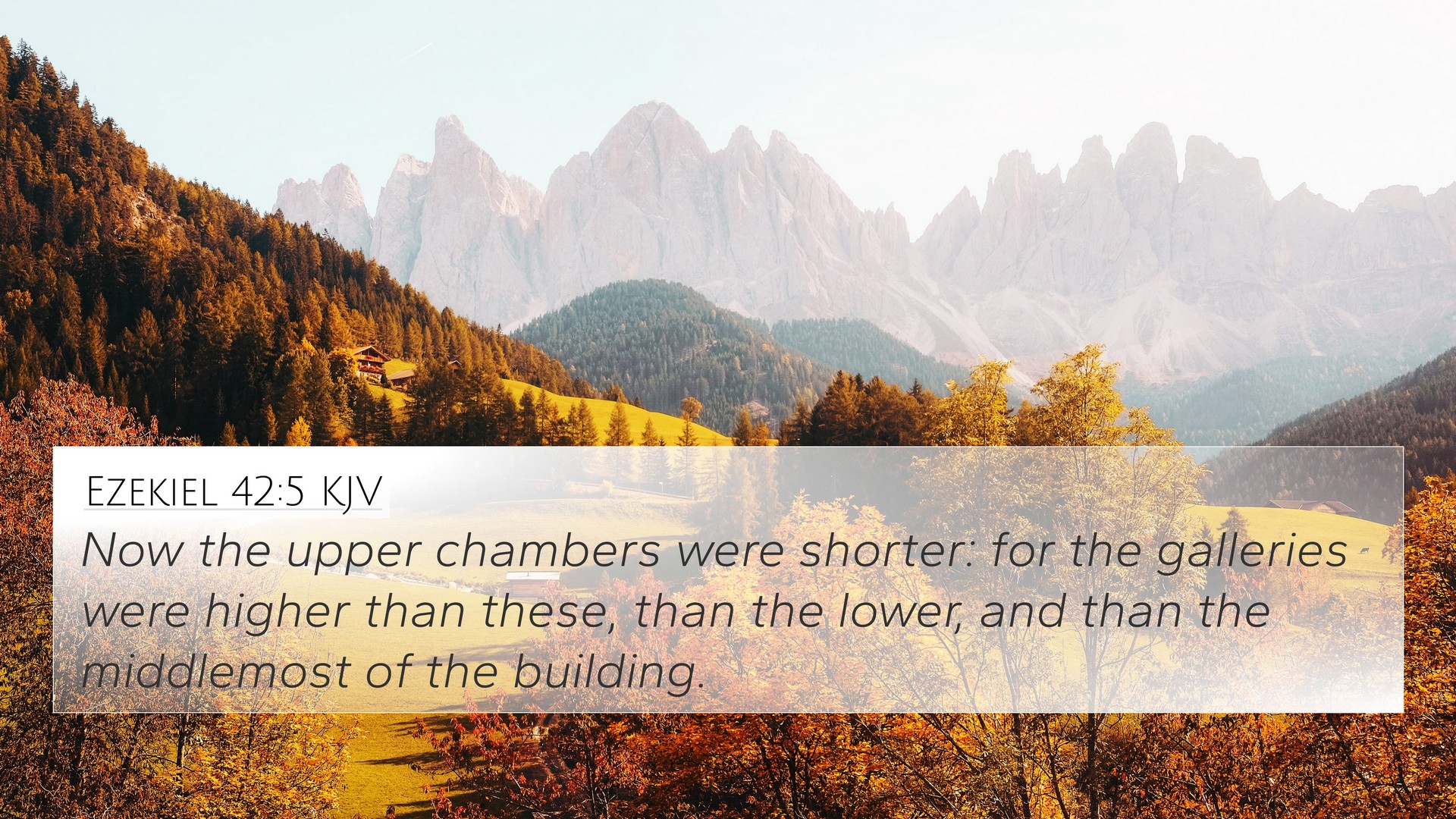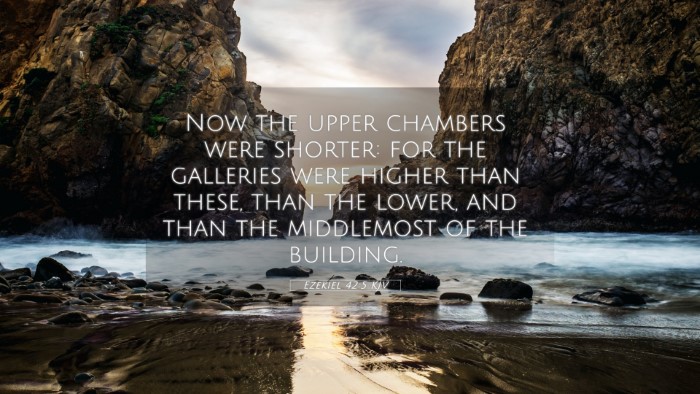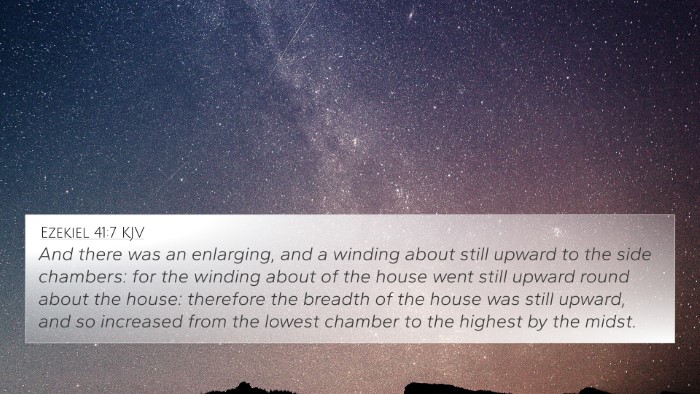Ezekiel 42:5 - Summary and Interpretation
Ezekiel 42:5 states: "Now the upper chambers were shorter: for the galleries were higher than these, and were in the uppermost, and the lower does all of these." This verse is situated within the intricate description of the temple structure that God reveals to Ezekiel. Understanding this passage involves exploring several key elements, including architectural significance, spiritual symbolism, and its relation to other Biblical texts.
Interpretation Overview
The verse encapsulates the architectural plan of the heavenly temple, emphasizing the hierarchical nature of the chambers.
According to Matthew Henry, the verse illustrates God's design for His house, where there is an order and elevation that reflects divine authority. Albert Barnes notes that the 'upper chambers' refer to spiritual heights that believers can aspire to. Adam Clarke emphasizes the idea that the physical design of the temple not only serves practical purposes but also conveys deeper spiritual meanings.
Architectural Analysis
The passage draws attention to the structural features of the temple.
-
Upper Chambers: The term suggests elevated spiritual experiences available to worshippers.
-
Higher Galleries: These can symbolize a connection to higher wisdom and understanding, indicating that spiritual insight often requires ascension above worldly concerns.
-
Design Implications: The passage may emphasize God’s order in worship and the importance of the communal and personal aspects of religious life.
Biblical Cross-References
This verse connects with multiple scriptures that relate to the temple or spiritual structures:
- Ezekiel 40:2-4: A prior vision where Ezekiel describes the comprehensive plan of the temple, signaling the importance of divine blueprint.
- Hebrews 8:5: Connects to the idea of the earthly temple being a shadow of heavenly realities.
- Revelation 21:22: The absence of a physical temple in the New Jerusalem, highlighting the presence of God.
- 1 Corinthians 3:16-17: Believers as a temple of the Holy Spirit, emphasizing personal spirituality.
- Psalm 27:4: The desire to dwell in the house of the Lord, reflecting the spiritual longing depicted in the temple's design.
- Isaiah 66:1: Indicating that heaven is God's throne, while the earth is His footstool, emphasizing God’s omnipresence.
- John 2:19-21: Jesus’ statement about His body being the temple, highlighting parallels between His physical body and the spiritual temple.
Spiritual Significance
This verse also symbolizes the believer's journey towards deeper communion with God. The hierarchical structure indicates spiritual growth:
-
Spiritual Ascent: Just as the chambers increase in height, so too does one's relationship with God deepen through prayer and worship.
-
Community Aspect: The design of the temple suggests a collective experience of faith, where worshippers come together to reach higher understanding.
Thematic Connections
The themes of temple worship, spiritual ascent, and divine order are significant because they resonate throughout both the Old and New Testaments, showcasing God's desire for His people to commune with Him in structured holiness.
Studying Cross-Referenced Themes
When engaging in a cross-reference Bible study, one can utilize tools such as:
- Bible concordances
- Cross-reference Bible study guides
- Bible chain references
These resources facilitate the identification of implicit and explicit connections between Bible verses, promoting a holistic understanding of Scripture. For instance, looking at how to find cross-references in the Bible can reveal surprising thematic overlap and deepen one’s study of Ezekiel 42:5.
Conclusion
In sum, Ezekiel 42:5 offers a profound insight into the nature of divine worship and its architectural expression. By exploring biblical cross-references and engaging in thematic analysis, believers can gain richer understanding and appreciation for this passage and its place in Scriptural discourse.



